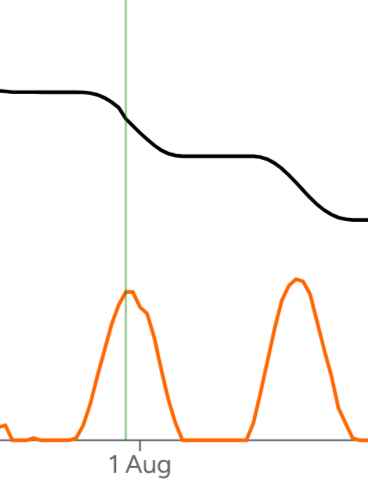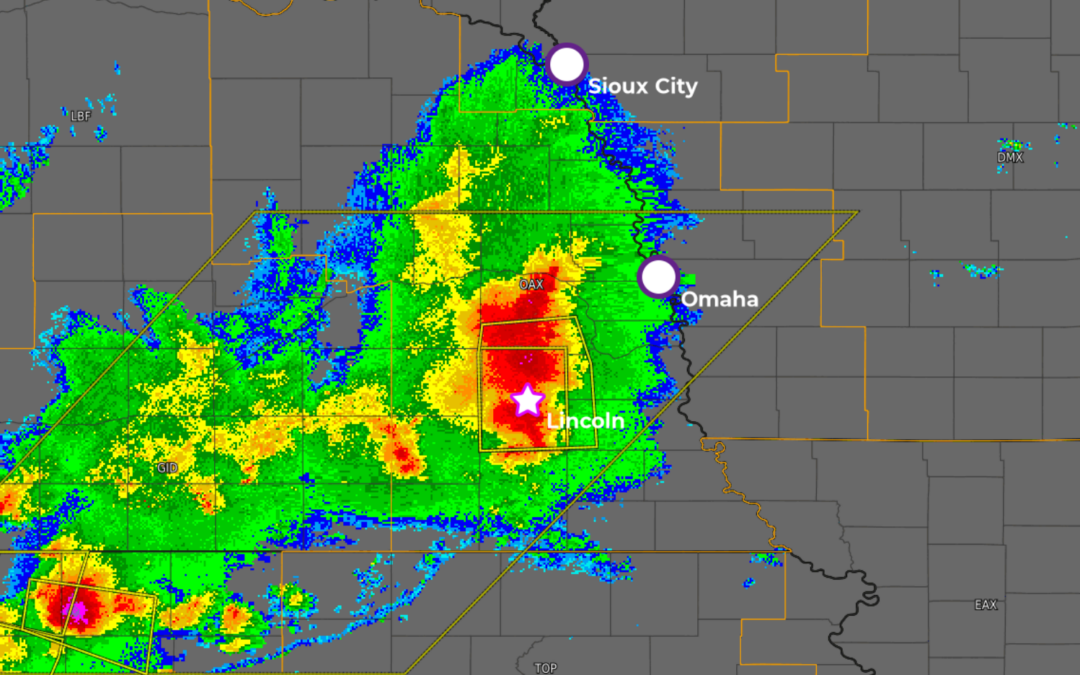Not all precipitation events are created equal. That was definitely the case in Southeast Nebraska during the last week of July 2024. The high temperatures had been around 100F with dew points were in the 70s. Any storm that develops during those conditions can quickly turn severe. That’s what happened on July 31, 2024 and over half an inch fell in the minutes.
So, how did that quick rain storm re-wet the dry clay soils? Did golf course superintendents in Lincoln need to irrigate the following night? The Water Resource Planning tool in GreenKeeper and our active research into irrigation scheduling helped to answer this question.
The Water Resource Tool uses weather data, irrigation run times, and frequent soil moisture measurements to predict future soil moisture. Our goal is have the predicted soil moisture match the measured moisture at any hour of the day. The image below shows a successful prediction where the soil moisture (black line) is depleting and the measured water content (right side of green vertical line) aligns with the predicted value (left side of the line).

Our research team takes these measurements and then runs predictions across dozes of irrigated turf areas daily around Lincoln, NE. Our models are getting pretty good, but all the turf areas growing on our silty clay soils had the same model error the morning after the storm. The predicted soil moisture levels were significantly higher than the actual measure soil moisture the following morning. So what happened? Were did that water go?
Precipitation Run-off and Leaching
The storm dropped a lot of moisture very quickly. The dry clay soils were likely slow to absorb the entire amount of the precipitation. It is also possible that some of the water leach below the root zone during the night. This resulted in less than the measured precipitation available for the turf to use. At Holmes Golf Course, 0.8 inches of precipitation increased soil moisture, but it was 2.9% less than the model predicted. Than means that only 0.63″ of the 0.8″ of rain remained in the root zone. That reduction is equivalent to one day’s worth of recent evapotranspiration. Most Lincoln turf managers irrigated the following night because ET levels remained very high.
This data and analysis is more than academic. It can help turf managers estimate how efficiently a precipitation event actually changed soil moisture. Slow and steady rain will have higher water capture efficiency than quick and strong storms. While sand root zones can absorb rain faster than finer-textured soils, they have a limited storage capacity to hold that water (field capacity).
Turf managers can improve precipitation capture efficiency with frequent venting, use of wetting agents, and even sand topdressing. Use GreenKeeper’s Water Resource Planner to understand how soil moisture changes across the different soils at your facility change.




